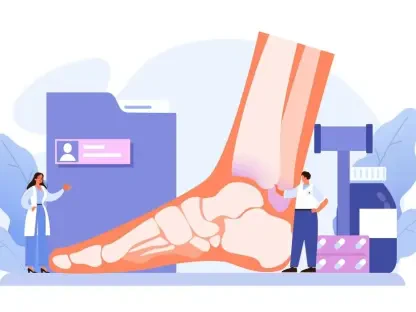In recent years, cyberattacks on healthcare networks have become more frequent and severe, exposing sensitive data and compromising patient trust. The significant data breaches reported by Community Health Center Inc. and NorthBay Healthcare Corporation are stark reminders of the vulnerabilities within healthcare systems. At Community Health Center Inc., the breach exposed the personal details of over a million patients, while NorthBay Healthcare Corporation faced a similar crisis affecting over half a million individuals. With these alarming incidents, it’s imperative to explore strategies that can help healthcare networks combat the growing cybersecurity threats they face.
Enhancing Security Measures and Protocols
One of the first lines of defense against cyberattacks is the implementation of robust security measures and protocols. This includes establishing multi-layered security frameworks that involve firewalls, intrusion detection systems, and encryption of sensitive data. By utilizing these tools, healthcare networks can create multiple barriers that make it harder for cybercriminals to access critical systems. Regular security audits and vulnerability assessments are also crucial, as they help identify potential weaknesses in the system that hackers could exploit. Additionally, network segmentation can minimize damage by ensuring that a breach in one area does not compromise the entire network.
Furthermore, healthcare networks should adopt strict access controls, ensuring that only authorized personnel can access sensitive information. Implementing multi-factor authentication (MFA) adds an extra layer of security, making it more difficult for unauthorized users to infiltrate the system. Alongside these technical measures, creating a culture of cybersecurity within the organization is equally important. Regular training programs for staff can help raise awareness about phishing attacks, social engineering tactics, and the importance of following security protocols. When staff are well-informed, they become an integral part of the defense mechanism against cyber threats.
Responding to Breaches and Mitigating Damage
Despite best efforts, breaches may still occur, so having a robust incident response plan is essential. An effective response plan involves clear procedures for identifying, containing, and mitigating the impact of a breach. This includes immediate actions such as isolating affected systems to prevent further damage, conducting a thorough investigation to understand the scope of the breach, and notifying affected individuals and relevant authorities as required by law. In cases like the breaches faced by Community Health Center Inc. and NorthBay Healthcare Corporation, prompt action helped to mitigate potential harm and offer protective services to affected individuals.
Moreover, post-breach analysis is critical in understanding how the attack occurred and what measures can be taken to prevent future incidents. Healthcare networks should invest in forensic investigations and collaborate with cybersecurity experts to identify vulnerabilities and strengthen defenses. Communication is also key; transparent and honest communication with patients and stakeholders helps maintain trust and demonstrates the organization’s commitment to protecting personal information. Offering identity protection services, as done by the breached institutions, can also reassure affected individuals and provide a safety net against potential misuse of their data.
Investing in Long-Term Cybersecurity Strategies
In recent years, the frequency and severity of cyberattacks on healthcare networks have surged, jeopardizing sensitive data and eroding patient trust. Major data breaches at Community Health Center Inc. and NorthBay Healthcare Corporation serve as stark reminders of these vulnerabilities. At Community Health Center Inc., the breach exposed the personal details of over a million patients, while NorthBay Healthcare Corporation faced a similar crisis affecting more than half a million individuals. These alarming incidents highlight the critical need for healthcare networks to devise robust strategies to counteract the ever-growing cybersecurity threats. Methods like enhancing staff training on data protection, implementing advanced encryption techniques, and regularly updating security protocols are essential to safeguarding patient information. Additionally, fostering a security-first culture within organizations and collaborating with cybersecurity experts can further mitigate risks. As cyber threats continue to evolve, a proactive approach combining technology and education is crucial to protecting healthcare data and maintaining patient trust in the digital age.









